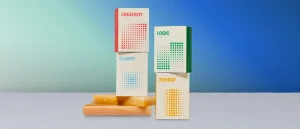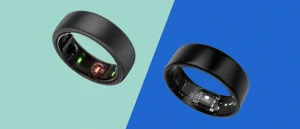Sensate’s $350 Anxiety-Killing Pebble Somehow Feels Like a Good Deal
As a card-carrying member of the anxiety disorder club, I’m a sucker for anything that promises to beat stress. Meditation—check. Exercise—daily. Wine—don’t mind if I do. Still, I was skeptical about Sensate, a vibrating device a bit smaller than your fist that promises “no-sweat serenity” via vagus nerve stimulation.
The vagus nerve is connected to nearly every bodily function you can think of—including how your body responds to stress. One of its primary jobs is helping your nervous system toggle between the parasympathetic “rest and digest” mode and the sympathetic “fight or flight” mode.
There are plenty of low-fi ways to stimulate the vagus, including breathing exercises (particularly ones when your exhale is longer than your inhale), humming, and exposure to cold temperatures (one more reason to cold plunge).
But a vibrating pebble? We’ll see.
What Does the Sensate Do?
The vagus (pronounced like Vegas, but without the all-you-can-eat buffets) is your body’s largest cranial nerve. People have been studying its impact as far back as the Roman Empire (1).
The vagus nerve has been dubbed a neural superhighway because it travels from the base of your brain to your gut, transporting vital information to every organ on its path, including the heart, intestines, liver, and kidneys.
Since trading togas for lab coats, researchers have discovered it has a hand in everything from your metabolism to your mood (2).
That last one is why you’re reading this. Recent research shows that stimulating the vagus helps kickstart the parasympathetic nervous system (PNS) into a more relaxed state (3). The PNS also increases heart rate variability (HRV)—the differences in the time interval between heartbeats. HRV is considered one of the best objective metrics for physical and emotional fitness.
What’s Good About the Sensate?
Surprisingly soothing
I’ve meditated for years, and while I’ve gotten pretty good at anchoring my awareness on my breath, my mind still gets distracted by passing thoughts like the dog in Up (squirrel!). Sensate provides a different anchor to focus on: vibration.
Unlike say, an electric toothbrush that vibrates at a constant Hz, Sensate cycles through different vibrations. Short pulses are followed by long, steady hums. They move through your breastbone and into your chest via bone conduction, the same principle employed by headphones like Shokz Open Run.
When I allowed myself to follow the feelings resonating through my chest, I definitely felt more relaxed, kind of how I imagine cat lovers feel when their puss purrs on their chest. (As a dog person I have no frame of reference; the only thing my dog does in the vicinity of my lap is pass gas).
You can adjust the intensity of the vibrations on the app. Personally, I preferred the stronger vibration level; but a gentler level might rock your world.
Sometimes when I sit in meditation, time crawls like a snail. I’m sure 20 minutes have gone by but when I sneak a peek at my timer, it’s only been 9. With Sensate, I had the opposite experience.
I frequently set the timer for 30 minutes and was shocked when it went off after what felt like 10. After each session, I felt more relaxed and less anxious. My 13-year-old daughter, who inherited my propensity for worry, kept stealing my Sensate to use during panic attacks. A few minutes with the device calmed her down better than any breathing exercise she’s tried.
Audio-guided relaxation actually works
The Sensate app has a variety of “soundscape” tracks that you can listen to while using the device. The music uses binaural beats—an emerging type of sound therapy. Slightly different frequencies of sound are played into each ear, creating a third sound that has been described as an auditory illusion. Binaural beats have been linked to decreased anxiety (4), increased focus (5), and better sleep and post-sleep mood (6).
The track themes are what you’d expect from a mediation-like device: Nature, Space & Time, Sacred Spaces, and Breathe. The music was, surprisingly, less new-agey than I’d anticipated. It was chill; the type of music you might hear playing in the background during a yoga class.
Within each theme, there are about half a dozen tracks that you can program to last either 10 or 20 minutes. You have to subscribe to Sensate Plus to get access to some of the tracks, but I was more than happy with the out-of-the-box ones. Like the vibration, you can adjust the track volume up or down.
Easy to use
The Sensate is easy to operate. You take it out of the cloth carrying pouch, press a small button the pebble and open the app. You charge the device with a cable. There isn’t a warning that the charge is getting low, so I just kept mine plugged in when I wasn’t using it.
The app is similarly bare-bones too. I’m an avid Headspace user and love that it tracks my cumulative meditation hours; a similar feature on Sensate’s app would be nice.
What’s Not Good About the Sensate?
Cost
At $300 ($350 if you upgrade to Plus), Sensate isn’t cheap, but it’s not outlandish, either. I pay $70 a year for a Headspace subscription, and I’d consider replacing that with Sensate. And —hot tip for Sensate’s marketing team—any device that can calm down a teenage girl in mere minutes can take my entire paycheck, frankly.
No integration with other apps or services
I mentioned that Sensate doesn’t track how long you use the device; it doesn’t track anything else, either. Nor does it pair with health apps or other gadgets. Toning the vagus (Sensate’s claim to fame) can result in lower HRV, but I couldn’t synch Sensate with my Apple Watch to see if there was any correlation between using the vibrating rock and my heart rate variability.
The Bottom Line
If you like the benefits of meditation but struggle with the practice, Sensate may be worth a try. The device’s vibrations, paired with the binaural beat audio tracks, are soothing—even if you can’t directly measure how well it tones your vagus nerve.
References
1. Neurology of Depression (2019). https://www.sciencedirect.com/topics/agricultural-and-biological-sciences/largus
2., 3. Breit, Sigrid et al (2018). Vagus Nerve as Modulator of the Brain–Gut Axis in Psychiatric and Inflammatory Disorders. https://www.frontiersin.org/articles/10.3389/fpsyt.2018.00044/full
4. Yusim, Anna et al (2020). Efficacy of Binaural Beat Meditation Technology for Treating Anxiety Symptoms. https://journals.lww.com/jonmd/Abstract/2020/02000/Efficacy_of_Binaural_Beat_Meditation_Technology.12.aspx
5. Colzata, Lorenza et al (2017). More attentional focusing through binaural beats: evidence from the global–local task. https://link.springer.com/article/10.1007/s00426-015-0727-0
6. Dabiri, Roya et al (2022). The effect of auditory stimulation using delta binaural beat for a better sleep and post-sleep mood: A pilot study. https://journals.sagepub.com/doi/full/10.1177/20552076221102243













